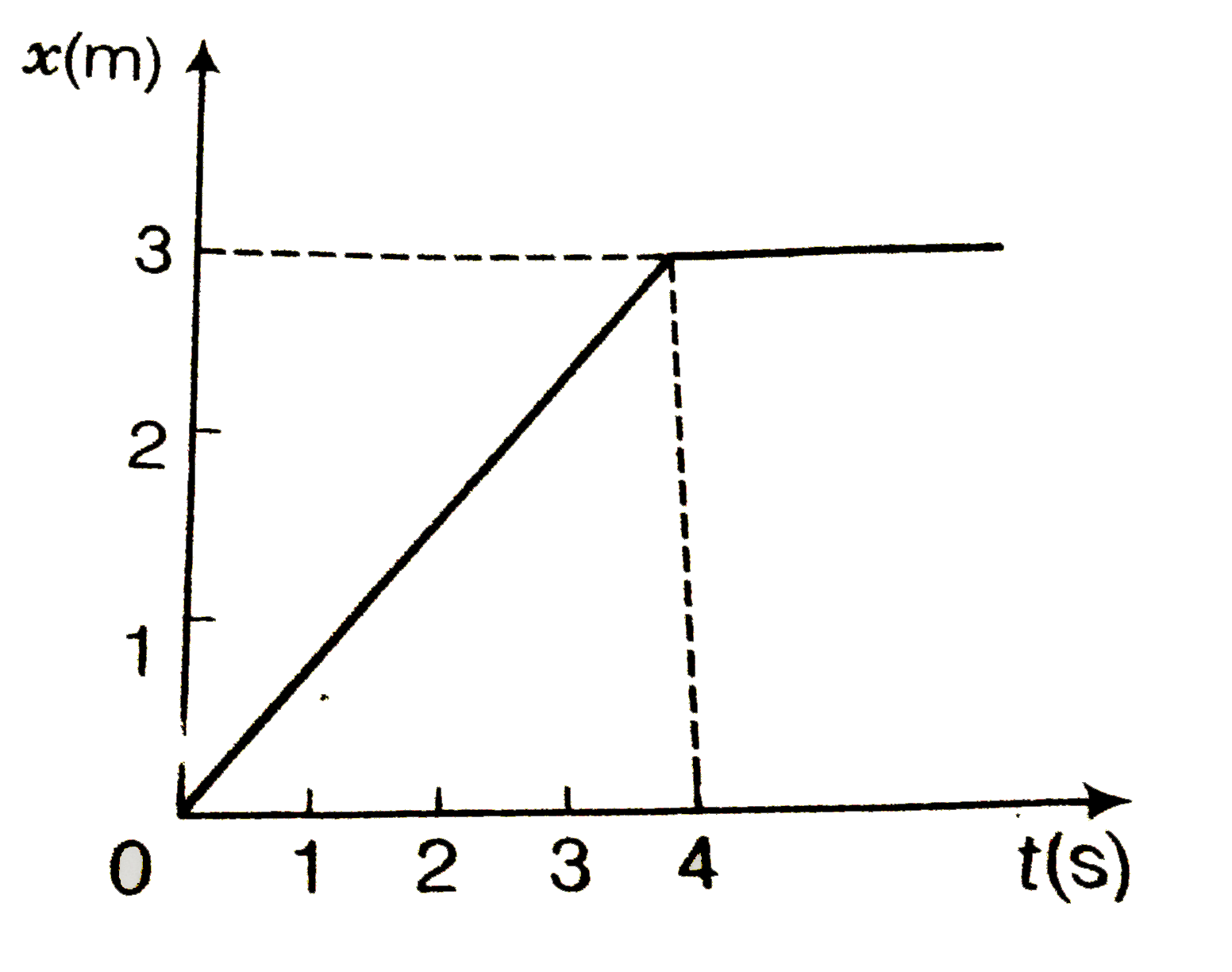Figure shows the position-time graph of a particle of mass 4 kg. What is the (a) force on the particle for t < 0, t > 4 s, 0 < t < 4 s? (b) impulse at t = 0 and t = 4 s ? (Consider one-dimensional motion only).
 Solution in Telugu
Solution in Telugu
(a) In all the three intervals, acceleration and, therefore, force are zero.
(b) 3kgms−1 at t=0,(c)−3kgms−1 at t=4s
Topper's Solved these Questions
- LAW OF MOTIONBOOK - NCERT TELUGUCHAPTER - LAW OF MOTIONEXERCISE - EXERCISE (ADDITIONAL EXERCISE)
17 Videos
- LAW OF MOTIONBOOK - NCERT TELUGUCHAPTER - LAW OF MOTIONEXERCISE - EXERCISE (ADDITIONAL EXERCISE)
17 Videos
- KINETIC THEORYBOOK - NCERT TELUGUCHAPTER - KINETIC THEORYEXERCISE - ADDITIONAL EXERCISE
3 Videos
- MECHANICAL PROPERTIES OF FLUIDS BOOK - NCERT TELUGUCHAPTER - MECHANICAL PROPERTIES OF FLUIDS EXERCISE - EXERCISE
45 Videos
Similar Questions
Figure shows the position-time graph of a body of mass 0.04 kg. Suggest a suitable physical context for this motion. What is the time between two consecutive impulses received by the body ? What is the magnitude of each impulse ?

View SolutionFigure shows the position-time graph of a body of mass 0.04 kg. Suggest a suitable physical context for this motion. What is the time between two consecutive impulses received by the body ? What is the magnitude of each impulse ?

View SolutionA metre long narrow bore held horizontally (and closed at one end) contains a 76 cm long mercury thread, which traps a 15 cm column of air. What happens if the tube is held vertically with the open end at the bottom ?
View SolutionExplain why
The blood pressure in humans is greater at the feet than at the brain.
View SolutionShown the position time graph of a particle of mass 4 kg What is the force on the particle for t<0,0<t<4s motion only
 .
.
View SolutionShows position time graph of a particle of mass 100g Find the impulse at t=0 and at t=4s
 .
.
View SolutionFig. shows the position-time graph of a particle of mass 4 kg. What is the (i) force acting on the particle for t lt 0, t lt 4 s, 0 lt t lt 4 s ? (ii) impulse at t = 0 and t = 4 s? Assume that the motion is one dimensional.
View SolutionThe position-time graph of a body of mass 2 kg is as given in figure . What is the impulse on the body at t = 0 s and t = 4 s .
View SolutionFig. shows the position-time graph of a particle of mass 4 kg. What is the Force on the particle for t lt 0, t gt 4s, 0 lt t lt 4s? (b) Impulse at t= 0 and t= 4s ? (Consider one dimensional motion only)
View SolutionFigure shows the position-time graph of a particle of mass 4 kg. What is the (a) force on the particle for t 4 s, 0
View SolutionFigure shows the position-time graph of a particle of mass 4 kg. What is the (a) force on the particle for t < 0, t > 4 s, 0 < t < 4 s? (b) impulse at t = 0 and t = 4 s ? (Consider one-dimensional motion only).

View SolutionFig. shows the position-time graph of a particle of mass 4 kg. What is the (i) force acting on the particle for t lt 0, t lt 4 s, 0 lt t lt 4 s ? (ii) impulse at t = 0 and t = 4 s? Assume that the motion is one dimensional.
View SolutionFigure shows the position-time graph of a particle of mass 4 kg, then
a) force on the particle for t<0,t>4s,0<t<4s? ?
b) impulse at t = 0 and t = 4 s. (consider one-dimensional motion only)

View SolutionShows the position-time graph of a particle of mass 4 kg. What is the (a) force on the particle for t<0,t>4s,0<t<4 s ? (b) impulse at t = 0 and t = 4 s ? (Consider onedimensional motion only).

View SolutionThe position-time graph of a body of mass 2 kg is as given in figure . What is the impulse on the body at t = 0 s and t = 4 s .

View Solution
